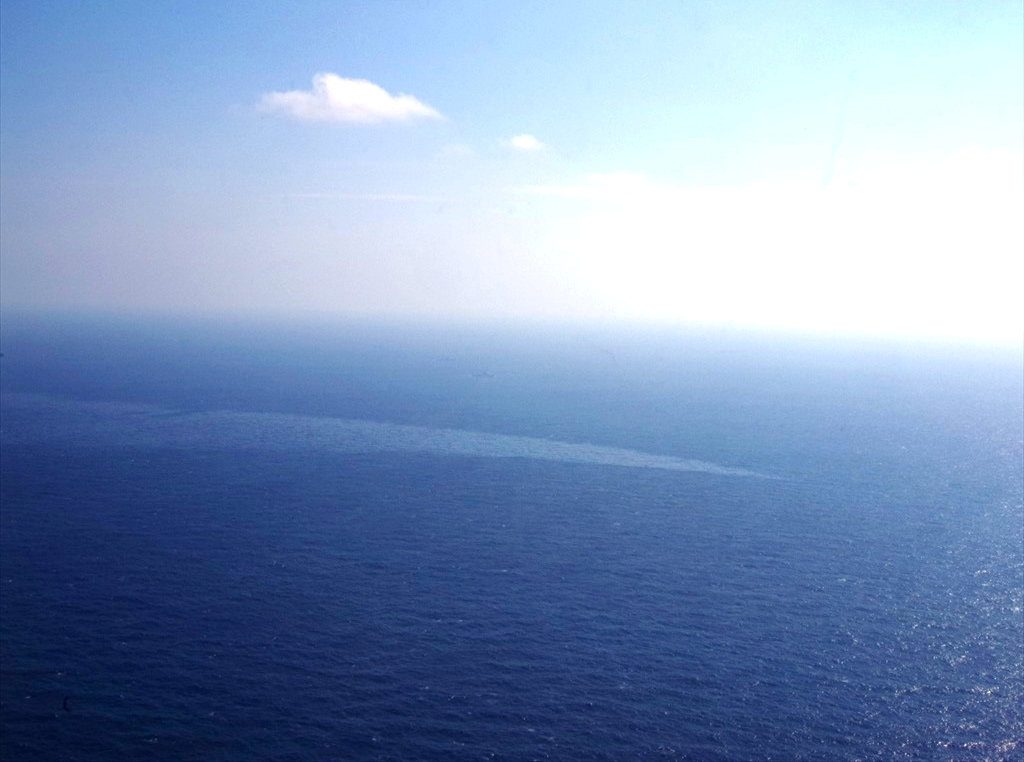UK Strikes at Heart of Russia’s Arctic Energy Empire
New maritime services ban threatens to sever lifeline for Yamal LNG exports By Paul Morgan (gCaptain) – In the frozen waters above the Arctic Circle, a fleet of specialised ships...

The oil spill from a stricken Iranian tanker Sanchi that sank on Sunday is seen in the East China Sea, on January 17, 2018 in this photo provided by Japan’s 10th Regional Coast Guard. 10th Regional Coast Guard Headquarters/Handout via REUTERS
![]() BEIJING, Jan 17 (Reuters) – An Iranian oil tanker that sank in the East China Sea has left two oil slicks covering a combined 109 square km (42 square miles), the Chinese government said, as maritime police scoured for damage and prepared to explore the wreck.
BEIJING, Jan 17 (Reuters) – An Iranian oil tanker that sank in the East China Sea has left two oil slicks covering a combined 109 square km (42 square miles), the Chinese government said, as maritime police scoured for damage and prepared to explore the wreck.
Satellite imaging showed a slick of 69 square km (26.6 square miles) and a second 40 square km (15.4 square miles) slick, which is less thick and not as concentrated, the State Oceanic Administration (SOA) said in a statement late on Tuesday.
The large tanker Sanchi (IMO:9356608) sank in the worst oil ship disaster in decades on Sunday, raising worries about damage to the marine ecosystem. The bodies of two sailors were recovered from the ship while a third body was pulled from the sea near the vessel. The remaining 29 crew of the ship are presumed dead.
In a statement on Wednesday, the Chinese Ministry of Transport said the salvage team had located the wreck, which was at a depth of 115 meters (377 feet) under sea level, and were preparing to send underwater robots to explore it.
The SOA said vessels had taken 31 water samples in the area around the wreck containing black grease with heavy oil smells, and a concentration of petroleum that exceeds some seawater quality standard limits.

Clean-up teams were continuing to monitor the wreck area to assess the distribution and drift of the oil spill and the ecological impact.
The Japan Coast Guard said on Wednesday the oil slick was “diffusing and disappearing.”
The slick is meandering across an area about 35 km (21.8 miles) long and 28 km (17.4 miles) wide, with a width of between 200 meters and 300 meters, the coast guard said in a statement after observing the area with a patrol ship and an airplane.
The Sanchi had been adrift and ablaze after crashing into the freighter CF Crystal (IMO:9497050) on Jan. 6. Strong winds pushed it away from the Chinese coast, where the incident happened, and into Japan’s exclusive economic zone.
The ship, which was carrying 136,000 tonnes or almost 1 million barrels of condensate – an ultra-light, highly flammable crude oil – sank after several explosions weakened the hull.
On Tuesday Japan’s environment ministry said it did not see much chance that the spill would reach its shores.
(Reporting by Josephine Mason, additional reporting by Kiyoshi Takenaka in Tokyo; Editing by Richard Pullin and Gareth Jones)
(c) Copyright Thomson Reuters 2018.

Sign up for gCaptain’s newsletter and never miss an update

Subscribe to gCaptain Daily and stay informed with the latest global maritime and offshore news
Essential news coupled with the finest maritime content sourced from across the globe.
Sign Up